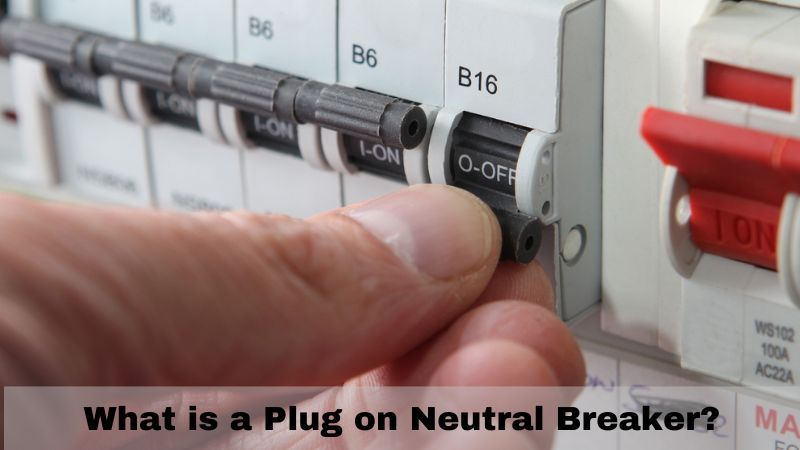The plug on a neutral breaker serves an important purpose in residential and commercial electrical systems. When connected properly, this plug helps ensure safe and reliable power distribution from the main electrical panel to circuits throughout the building.
Page Contents
The Role of Neutral Breakers
In electrical systems, breakers act like fuses and are designed to trip and shut off when too much current flows through a circuit. This helps prevent overheating and potential fires. Breakers come in two varieties – hot breakers and neutral breakers.
Hot breakers connect to the hot wires and act as the primary protection devices for circuits. Neutral breakers, on the other hand, connect to the neutral wires. The neutral wires carry electricity back to the main panel after it has passed through devices and equipment. An overload on the neutral can indicate a problem and can also lead to fires and damage.
While hot breakers protect individual branch circuits, neutral breakers monitor the overall neutral system. If too much current returns through the neutral wires, the neutral breaker will trip, disconnecting both the hot and neutral wires from the branch circuits they serve. This disables those circuits until the problem is identified and resolved.
Why Neutral Breakers Have a Plug
Unlike hot breakers, neutral breakers feature a plug that connects them to a bus bar inside the main electrical panel. This plug serves several important purposes:
- It allows the neutral breaker to be easily disconnected from the neutral bus for testing and maintenance.
- It enables the neutral breaker to be quickly replaced if it fails or needs upgrading.
- It allows multiple neutral wires to be consolidated into one larger cable that attaches to the breaker.
- It gives technicians the ability to remove the neutral breaker and maintain power if needed for troubleshooting.
Without the plug, neutral breakers would have to be hardwired directly to the bus. This would make them much more difficult to service and replace. The plug connection makes neutral breakers convenient and adaptable.
Proper Installation of Neutral Breakers
For neutral breakers to work correctly, they must be properly installed into the main electrical panel. The key steps include:
- Shut off all power to the panel before working on any connections.
- Locate the neutral bus bar inside the panel. This will be a long metal strip where all the neutral wires and the ground wires terminate.
- Loosen the lug on the end of the neutral bus bar to disconnect any existing neutral wires.
- Slide the neutral breaker plug into the loosened lug on the bus bar and tighten the connection.
- Connect all neutral wires to the neutral breaker using copper wire pigtails and wire nuts.
- Label the neutral breaker according to the manufacturer’s instructions.
- Secure the neutral breaker into place and close up the main panel.
- Restore power and test that the breaker is functioning properly.
The full capacity of the neutral bus should go through the breaker plug to ensure all neutral current is monitored. Neutral breakers are often installed in addition to primary ground fault circuit interrupters (GFCIs). Together, these provide comprehensive protection against electrical faults.
Signs of Problems with Neutral Breakers
If a neutral breaker is malfunctioning, it may fail to trip when it should or could trip unexpectedly without an overload condition. Some signs of issues include:
- Frequent unexplained tripping of all or multiple circuits in the panel
- Lights flickering, dimming, or surging throughout the building
- Unusually warm or hot breakers and neutral connections
- Smell of burning plastic near the service panel
- Multiple burned out bulbs throughout the electrical system
- GFCIs and AFCIs tripping without an apparent cause
Any of these could indicate a faulty neutral breaker that needs replacement. Loose wiring connections to the neutral bus or neutral breaker can also cause similar problems.
Replacing a Neutral Breaker
Replacing a faulty or old neutral breaker involves the following general steps:
- Turn off all power to the electrical panel.
- Remove the cover and carefully pull the problematic breaker out from its slot.
- Unplug the neutral wires from the old breaker.
- Unplug the old neutral breaker from the neutral bus.
- Plug in the new breaker of the same amperage rating.
- Secure the neutral wires to the new breaker.
- Push the replacement breaker fully into the slot.
- Replace the panel cover and turn power back on.
Testing should then be conducted to ensure normal operation. The project requires an electrical inspection in most jurisdictions. Only breakers designed for neutral line connection should be used.
Conclusion
The plug on a neutral electrical breaker allows for easy installation, troubleshooting, and replacement. When connected properly to the neutral bus, it gives neutral breakers the ability to monitor current flow and trip when necessary. Regular inspection and replacement of aged neutral breakers can help prevent problems and ensure a safe electrical system.
